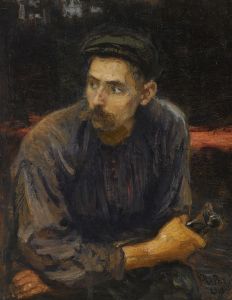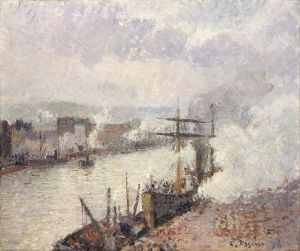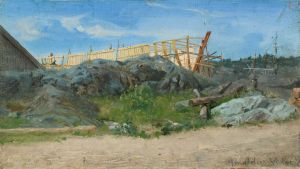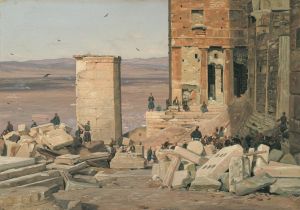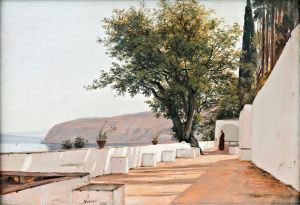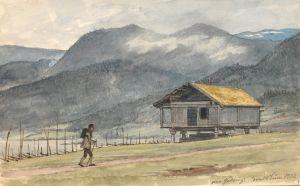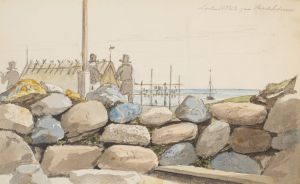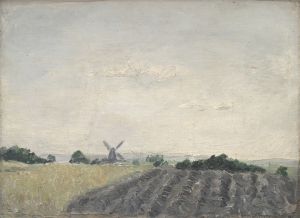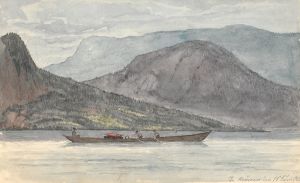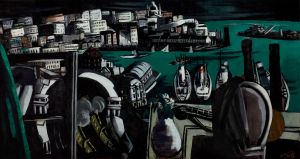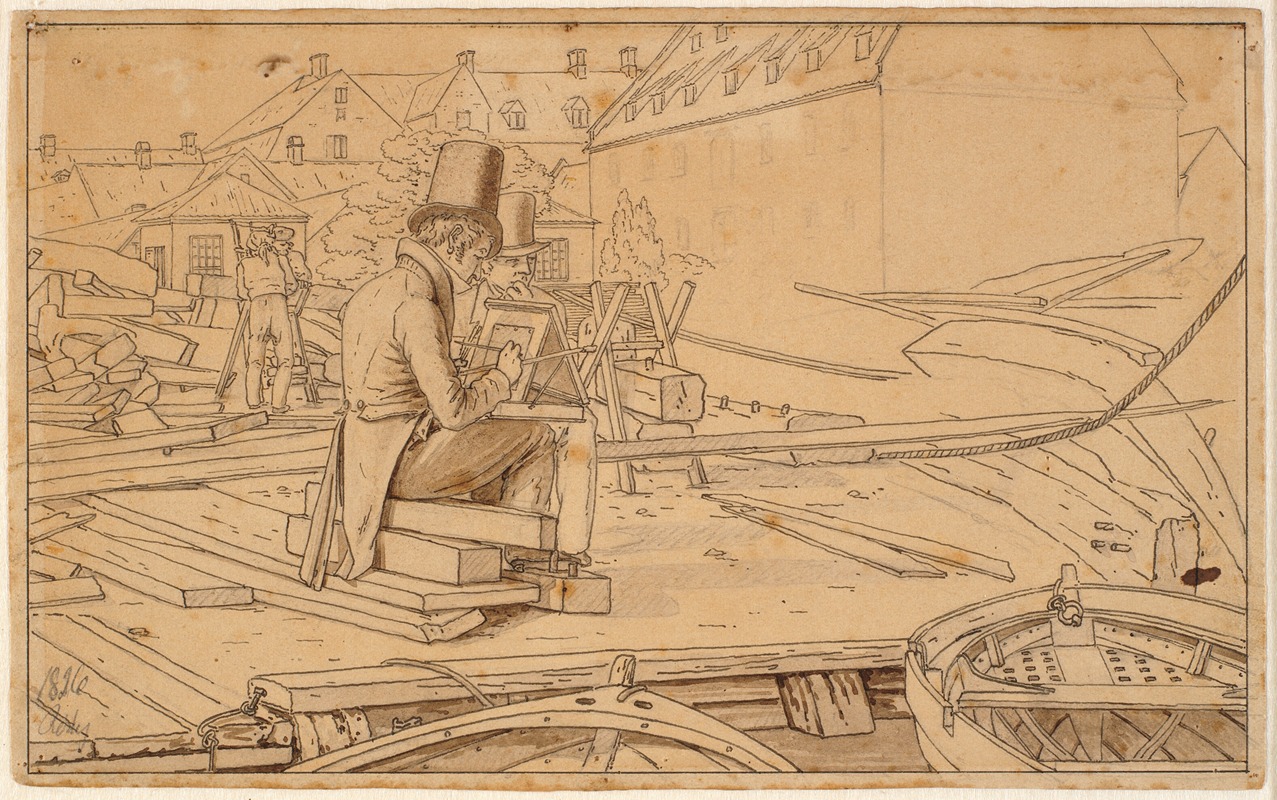
En kunstner malende ved et skibsværft
A hand-painted replica of Martinus Rørbye’s masterpiece En kunstner malende ved et skibsværft, meticulously crafted by professional artists to capture the true essence of the original. Each piece is created with museum-quality canvas and rare mineral pigments, carefully painted by experienced artists with delicate brushstrokes and rich, layered colors to perfectly recreate the texture of the original artwork. Unlike machine-printed reproductions, this hand-painted version brings the painting to life, infused with the artist’s emotions and skill in every stroke. Whether for personal collection or home decoration, it instantly elevates the artistic atmosphere of any space.
"En kunstner malende ved et skibsværft" (An Artist Painting at a Shipyard) is a notable work by the Danish Golden Age painter Martinus Rørbye. Created in 1833, this painting exemplifies Rørbye's keen interest in capturing everyday life and his adeptness at portraying the interplay between human activity and the surrounding environment.
Martinus Rørbye (1803–1848) was a prominent figure in the Danish Golden Age of painting, a period characterized by a flourishing of the arts in Denmark during the first half of the 19th century. Rørbye was known for his detailed and realistic depictions of landscapes, architecture, and scenes from daily life. His works often reflect a deep appreciation for the cultural and social aspects of the environments he painted.
"En kunstner malende ved et skibsværft" is a fine example of Rørbye's ability to blend genre painting with landscape art. The painting depicts an artist, presumably a self-portrait of Rørbye himself, at work near a shipyard. The setting is likely inspired by the bustling maritime activities that were common in Denmark during this period. Shipyards were vital to the Danish economy and society, serving as hubs of industry and commerce.
In the painting, the artist is shown with his easel, intently focused on capturing the scene before him. The composition skillfully balances the human figure with the industrial backdrop, highlighting the contrast between the solitary artist and the dynamic environment of the shipyard. The use of light and shadow in the painting adds depth and dimension, drawing the viewer's eye to the central figure while also inviting exploration of the detailed surroundings.
Rørbye's attention to detail is evident in the meticulous rendering of the ships and the various elements of the shipyard. The painting captures the essence of a working shipyard, with its array of tools, materials, and partially constructed vessels. This attention to detail not only showcases Rørbye's technical skill but also provides a historical snapshot of the shipbuilding industry during the early 19th century.
The painting is also notable for its exploration of the theme of the artist at work. By depicting himself within the scene, Rørbye offers a glimpse into the life of an artist and the process of creation. This self-referential aspect adds a layer of introspection to the work, inviting viewers to consider the relationship between the artist, his subject, and the act of painting itself.
"En kunstner malende ved et skibsværft" is housed in the Statens Museum for Kunst (The National Gallery of Denmark) in Copenhagen, where it remains an important part of the museum's collection of Danish Golden Age art. The painting continues to be appreciated for its artistic merit and its contribution to the understanding of Denmark's cultural and industrial history during the 19th century.
Overall, Martinus Rørbye's "En kunstner malende ved et skibsværft" stands as a testament to the artist's skill in capturing the nuances of everyday life and the environments that shape human experience. Through this work, Rørbye not only documents a specific moment in time but also reflects on the broader themes of creativity and the artist's role in society.






